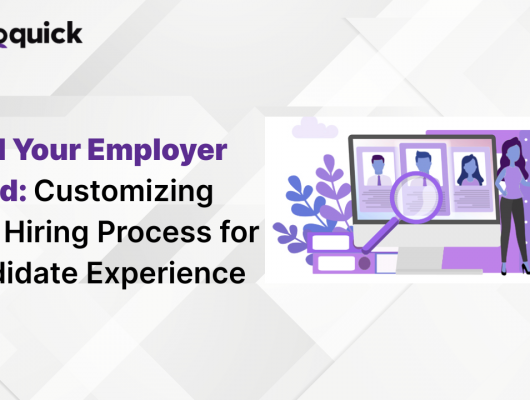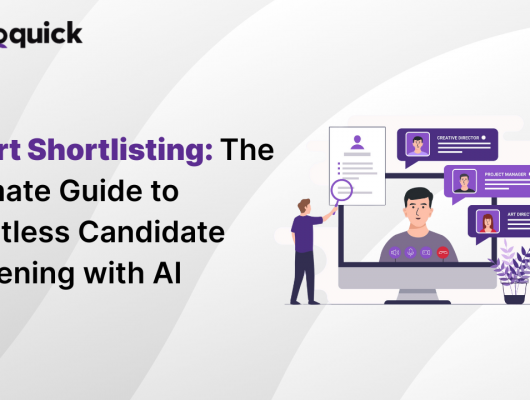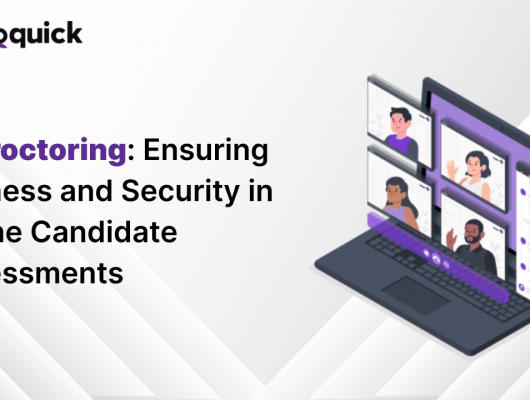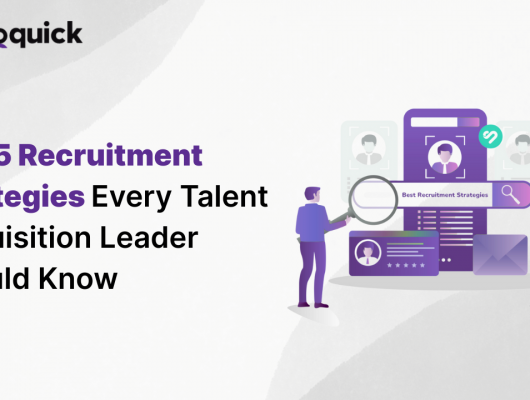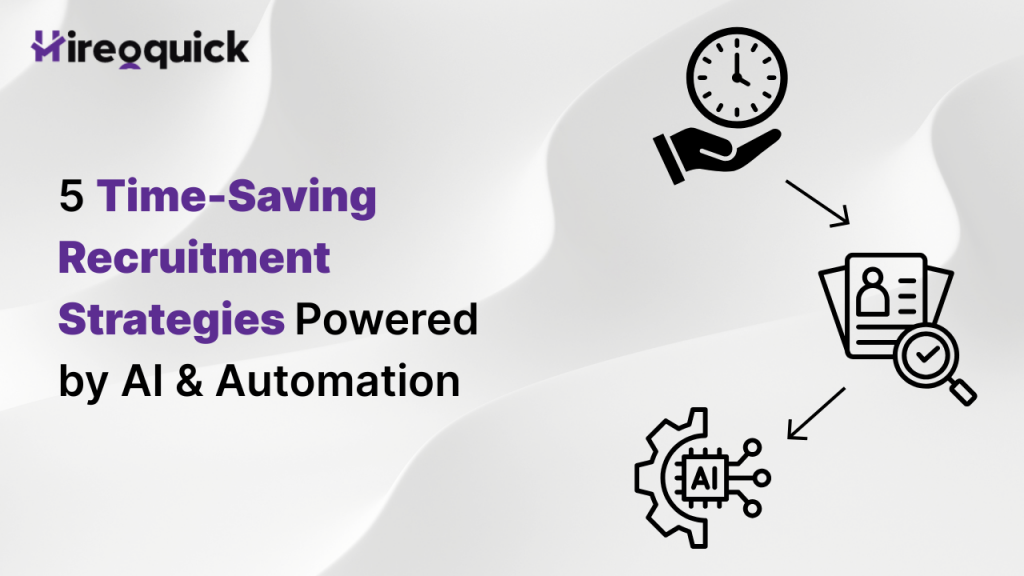
Recruiting, gosh, it’s definitely a demanding field, isn’t it? So many recruiters often just find themselves absolutely buried in repetitive tasks. And honestly? Those tasks really drain away valuable time and energy. It makes you think, what if there were a way to get some of that time back?
Well, artificial intelligence (AI) and automation actually offer some pretty powerful solutions. It’s really important to say right up front, this isn’t about replacing recruiters. Not at all. It’s more about giving them a real boost, empowering them to be more efficient and effective. I remember seeing a study recently, can’t recall which one specifically, but it highlighted the definite positive impact AI is having on recruitment. Check out this study on AI in recruitment from Gartner
So, this blog post is going to dive into five very specific ways you can use these technologies to free up some time. The idea is these strategies should genuinely improve your recruitment process overall and, hopefully, lead to even better hires. Let’s just, you know, dive in and see how we might transform some of those daily recruitment efforts.
Reclaiming Time in the Age of Recruitment
Recruiters are under increasing pressure, it feels like, all the time. The demand for top talent seems higher than ever, and at the same time, the whole recruitment landscape? It just keeps changing. Those manual, repetitive tasks we talked about earlier, like sifting through piles of resumes or trying to schedule interviews, they just eat up precious time. That leaves less space, naturally, for more strategic things you really want to be doing.
This is where AI and automation really seem to step in. They can act like, well, powerful allies, helping to boost both efficiency and accuracy in different ways.
Anyway, this post aims to show you five specific strategies. Strategies that, I think, can genuinely help you save time by bringing in AI and automation. You’ll see how you might streamline some processes and maybe even find those best candidates a bit more smoothly. The benefits, when you think about it, seem pretty clear: you save time, you improve how things work, and you end up with better hires overall.
Here’s a quick look at what we’ll get into, just to set expectations:
- Making Candidate Sourcing & Screening Smoother
- Boosting Candidate Communication & Engagement
- Handling Interview Scheduling & Coordination More Easily
- Speeding Up Assessment & Shortlisting
- Automating Offer Management & Some Pre-Onboarding Bits
The Hidden Costs: Why Traditional Recruitment Can Feel Like a Time Sink
Okay, so traditional recruitment processes, they’re honestly just full of tasks that take up so much time. Tasks that often pull recruiters away from their main job, which is, you know, finding great people. Let’s just quickly look at some of the big culprits for soaking up time.
Manual Resume Screening & Parsing (The sheer volume)
Just the sheer volume of resumes that can come in, it’s kind of overwhelming sometimes, isn’t it? Recruiters can spend hours, literally hours, manually looking through each one. This whole process? It’s tedious, no getting around it, and prone to making mistakes, because, well, we’re human. And just pulling the important details out of those resumes? Also a pretty laborious job.
Scheduling Headaches & Calendar Juggling
Trying to coordinate interview schedules… oh my. That can feel like a real logistical nightmare sometimes. All those back-and-forth emails, people’s conflicting calendars, it just creates delays. And it’s frustrating, I think, for everyone involved, the recruiter and the candidate.
Repetitive Candidate Communication (Emails, updates)
Keeping candidates in the loop requires constant updates. And answering the same few questions over and over? That definitely consumes valuable time. Doing all this manually? Yeah, it’s just not the most efficient way to go about it.
Data Entry & Administrative Overhead
Just manually typing data into different systems, that’s another big time drain right there. All that administrative stuff just pulls recruiters away from things that are, frankly, more strategic and probably more interesting. Accurate data entry is totally necessary, of course, but wow, is it time-consuming.
Coordination Across Teams
Recruiting often involves working with several different teams, right? Trying to get feedback and approvals from everyone adds another layer of complexity. And this part of the process often gets slowed down by communication delays, unfortunately.
All these manual tasks, they really do seem to stop recruiters from focusing on those more strategic activities. And that, in turn, well, it just hinders how efficient the whole recruitment process can be. It feels like, maybe, it’s time to try a slightly better way.
AI & Automation: Transforming Recruitment for Time-Efficient Hiring
So, AI and automation are really starting to shake things up in recruitment. They’re genuinely transforming how traditional processes work. They bring speed, accuracy, and the ability to scale things up, which is great. AI, you could say, uses data to make smart decisions, while automation just handles all those repetitive tasks without needing a person to step in every single time. This shift, you see it leading to what people are calling “time-efficient hiring.”
AI can, for instance, screen hundreds of resumes really quickly, helping identify candidates who seem like the best fit. Automation can then maybe schedule interviews or send out personalized emails automatically. Together, they can create something that feels a bit more seamless and, yes, more efficient.
These technologies really do seem to offer concrete ways to solve some of those specific problems recruiters face. They allow recruiters, ideally, to spend more time building relationships with people and making those key strategic hiring decisions. It feels like AI and automation are truly changing the game, and for the better, honestly.
Strategy 1: Streamlining Candidate Sourcing & Screening with AI Recruitment Tools
AI is definitely changing how we find and screen candidates. It offers some really powerful tools that can help make these initial stages a lot smoother.
AI-Powered Resume Parsing & Data Extraction (Saving hours of reading)
Think about AI-powered resume parsing. It automatically pulls out all the key information from resumes. This process alone can save hours of just manual reading. AI can quickly spot relevant skills, experience, and qualifications. It’s pretty neat.
Smart Candidate Matching (Matching profiles to requirements automatically)
AI can also match candidate profiles to job requirements. This essentially automates finding candidates who seem like a good fit. Using smart matching algorithms, the idea is you actually improve the quality of the shortlist you get.
Automating Job Board Posting & Candidate Outreach (Reaching wider pools faster)
AI tools can handle posting jobs to different boards. And they can also help automate reaching out to potential candidates. This helps you get your job in front of a wider group of people, faster. Automated outreach, logically, should increase the number of applications you receive.
Predictive Sourcing (Identifying potential candidates based on data)
Predictive sourcing uses data to try and figure out who might be a good candidate. This approach lets recruiters proactively reach out to people who might be top talent, even if they aren’t actively looking. Predictive sourcing, maybe, can uncover some real hidden gems you might otherwise miss.
AI can look at data to identify potential candidates who, perhaps, aren’t actively job hunting but have the right skills and experience for your company’s needs. This more proactive way of working could potentially give you a bit of a competitive edge in the talent market.
These capabilities really do make AI recruitment tools incredibly valuable, I think. They save time, yes, but they also seem to improve the quality of the candidates you find. And perhaps most importantly, they let recruiters focus on building those personal connections. Which, when you think about it, probably improves the whole hiring process in the long run.
Strategy 2: Enhancing Candidate Communication & Engagement via Automation
Automation can genuinely make candidate communication better. It can also help boost engagement, all while saving time for the recruitment team.
The Power of Recruitment Chatbots (Handling FAQs, initial screening 24/7)
Recruitment chatbots, they’re pretty cool. They can handle frequently asked questions and even do some initial screening, working 24/7. They give instant answers to common things, which really frees up recruiters to spend time on tasks that are, you know, more complex and probably need human judgment.
Automated Email Sequences & Nurturing (Keeping candidates informed without manual effort)
Setting up automated email sequences can keep candidates in the loop. They can guide them through the hiring process. Using this kind of automated communication really cuts down on the amount of manual effort required from the recruiter’s side.
Personalized Communication at Scale (Using automation to send relevant messages based on stage)
Automation actually makes it possible to send personalized communications, even to a large number of candidates. You can set it up so recruiters send relevant messages based on where the candidate is in the process. This helps create an experience that feels, hopefully, more engaging and a bit more personal.
Consistent communication, especially when automated, tends to make the candidate experience better. It can help reduce the number of people who drop out during the process and, frankly, strengthens your employer brand.
Making sure candidates have a positive experience is, I think, really important for attracting good people. By using automation for communication, recruiters can help ensure candidates get the information they need and stay engaged throughout the process.
Strategy 3: Effortless Interview Scheduling & Coordination
Trying to schedule interviews, as we touched on earlier, is such a time sink. Automation, thankfully, can really help smooth this process out.
Automated Calendar Integration & Booking (Candidates self-schedule based on availability)
Automated calendar integration lets candidates actually schedule the interviews themselves. They can just look at available time slots, based on the recruiter’s calendar, and pick what works. This completely gets rid of all those back-and-forth emails trying to find a time. What a relief!
Sending Automated Reminders and Confirmations (Reducing no-shows)
Sending automated reminders and confirmations can significantly reduce the number of people who don’t show up for interviews. Candidates get timely nudges about their scheduled times. This just naturally improves attendance rates.
Handling Reschedules and Cancellations Gracefully (Automation updates all parties)
If someone needs to reschedule or cancel, automation can handle it smoothly. It automatically updates everyone involved. This saves a ton of time and really cuts down on potential confusion for everyone.
Just imagine saving, say, 10 minutes on every email exchange, and you might send 20 emails just to get one interview scheduled. Those small savings really do add up over time. It leads to, you know, much better efficiency overall. Automation helps make sure no one misses any important updates either, which is key.
Strategy 4: Accelerating Assessment & Shortlisting with AI Insights
AI can really help speed up the assessment and shortlisting part of hiring. It can provide some genuinely valuable insights.
AI-Driven Skill and Aptitude Assessments (Automated scoring and feedback)
Assessments driven by AI can automate the scoring and feedback process. They can evaluate skills and aptitude quite quickly and, presumably, accurately. This completely removes the need for manual grading, which, let’s be honest, takes time.
Analyzing Video Interviews for Key Traits
Some AI tools can even analyze video interviews. They might look for non-verbal cues or communication patterns, which could potentially provide insights into how suitable a candidate might be. It’s really important to use AI here responsibly and ethically, of course, focusing only on observable cues and making sure it’s not introducing bias in any way.
Creating Data-Backed Shortlists (AI provides objective data points for consideration)
AI can help create shortlists based on data. It provides objective pieces of information to consider. This can really help recruiters when they’re trying to make informed decisions about who to move forward with.
AI certainly assists in the evaluation process, for sure. But human review is still absolutely crucial, I think. Recruiters should always look at what the AI finds and validate it. And they need to consider the wider context too, of course.
Strategy 5: Automating Offer Management & Pre-Onboarding Tasks
Automation doesn’t just stop when you decide who to hire. It can also really help with managing the offer process and getting new hires ready before their first day.
Generating and Sending Offer Letters Automatically (Based on templates and candidate data)
Offer letters? They can be automatically generated using templates and pulling in the candidate’s specific details. This saves a lot of time and helps reduce errors. Automated offer letters also help ensure consistency, which is important.
Initiating Background Checks & Compliance Checks Seamlessly
Automation can smoothly start background checks and compliance checks. This really streamlines that part of the process. It helps make sure everything aligns with legal requirements, often faster than doing it manually.
Automating Pre-Onboarding Communications and Document Collection
Setting up automated communications and getting documents collected before someone starts? That creates a much smoother transition for the new person joining the company. It also lightens the load, thankfully, for HR and the recruiting team. That frees up their time for, well, other tasks.
By automating these steps, companies can, I think, create a genuinely better experience for the new hire. The new person feels welcomed and, hopefully, prepared. And that really helps set the stage for them to have a successful start, which is what you want.
Beyond Saving Time: Additional Benefits of AI & Automation in Recruitment
You know, AI and automation bring benefits that go beyond just saving time. It’s not only about watching the clock.
Improved Candidate Experience (Faster responses, smoother process)
When candidates get faster responses and the whole process feels smoother? That really improves their experience. And that, in turn, helps make your company look better as an employer.
Reduced Bias in Hiring (When used correctly for objective data analysis)
This is a big one. When used correctly, focusing on analyzing objective data, AI can actually help reduce bias in hiring decisions. It’s something to strive for.
Enhanced Data Collection & Analytics (Better insights for optimization)
You get better data collection and analysis with these tools. And that gives you better insights into what’s working, or maybe what’s not, so you can improve your recruitment strategies going forward.
Increased Recruiter Productivity & Job Satisfaction (Focusing on high-value tasks)
When recruiters aren’t buried in repetitive admin, and can focus on the more valuable parts of their job? That increases their productivity, naturally, and I bet it makes the job more satisfying too. AI and automation can really empower recruiters in that way.
Cost Savings (Reduced administrative overhead)
And yes, there can be cost savings. By reducing all that administrative overhead, automation simply reduces the need for as much manual work.
So, yeah, improved candidate experience, hopefully less bias, getting better data, recruiters being more productive and happier, and saving some money on costs. All these things are, arguably, major benefits you see when you start using AI and automation.
Choosing the Right AI Recruitment Tools for Your Needs
Okay, so deciding on the right AI recruitment tools for your specific situation? That’s pretty important. What features should you even look for if you’re trying to be more time-efficient?
Key Features to Prioritize
Well, integration with your existing ATS (Applicant Tracking System) is definitely key. And you’ll want to look at the specific AI features it offers, things like parsing resumes, scheduling capabilities, and communication automation. The platform should really work smoothly with the systems you already have in place.
Understanding Integration Capabilities
How well does the tool actually talk to your other HR tech? Seamless integration is, honestly, essential for making things efficient. You really want to avoid having data stuck in different places that can’t connect.
Scalability and Support
The tools you pick should really be able to grow with your company. They need to be scalable. And having excellent support is also a must. Good support helps ensure everything runs smoothly, which saves time in troubleshooting later!
Platforms that offer a whole set of AI and automation tools all in one place often make it easier to get everything adopted. You might also want to look for tools that allow for custom branding, maybe proctoring features if you do assessments that way, and the ability to customize assessments. Features like AI parsing for resumes and helping write job descriptions are often seen as really useful too.
Implementing AI & Automation: Best Practices for Success
Bringing in AI and automation definitely needs some careful thought and planning. Here are just a few things people suggest doing, maybe some best practices, if you will.
Start Small: Pilot Programs
Don’t feel like you have to automate absolutely everything all at once. That can be overwhelming. It’s often a good idea to start with smaller pilot programs. Just try it out in one area first, see how it goes, and then maybe gradually roll out more automation.
Ensure Data Privacy and Security Compliance
This is non-negotiable, obviously. Data privacy and security compliance are absolutely essential. You must comply with all the relevant regulations and, of course, protect candidate data very carefully.
Train Your Team: Empowering Recruiters, Not Replacing Them
Make sure your team knows how to use these new tools effectively. The goal is to empower recruiters, to give them better tools, not to replace what they do. Training is key to making sure they feel comfortable and can actually use the tech to their advantage.
Monitor, Analyze, and Refine Processes Continuously
It’s not a set-it-and-forget-it thing. You really need to keep an eye on things. Monitor, analyze how the automated processes are working, and then make adjustments as needed. Regularly evaluating how effective the automation is helps you make sure you’re getting the most out of it.
Get Buy-in from Stakeholders
Getting everyone on board from across the organization is really important. You need buy-in from key people. This just helps ensure the implementation goes smoothly and is actually successful in the long run.
Here’s a little summary table, just to make it easy to see these points again:
| Best Practice | Description |
|---|---|
| Start Small | Try out smaller pilot programs before going big with automation. |
| Data Privacy and Security | It’s crucial to follow data privacy rules and keep candidate data safe. |
| Train Your Team | Show recruiters how to use the new AI and automation tools effectively. |
| Monitor, Analyze, and Refine | Keep checking how the automated processes are working and make changes if needed. |
| Get Buy-in from Stakeholders | Make sure key people across the company agree and support the AI and automation plans. |
Measuring the ROI: KPIs for Recruitment Process Efficiency
You really need to be able to show that this is worth the investment, right? Measuring the return on investment is pretty essential. How do you actually prove that these strategies are working and adding value?
Tracking Time-to-Hire Reduction
One key thing is tracking how much the Time-to-Hire Reduction. Measure if you’re filling positions faster than before.
Analyzing Cost-per-Hire Changes
Look at whether the cost involved in hiring each person changes. See if using automation actually helps reduce overall recruitment costs.
Measuring Recruiter Output/Capacity Increase
Try to measure if recruiters are able to handle more candidates or requisitions. Assess if automation is increasing how much work they can get done.
Gauging Candidate Satisfaction (CSAT)
It’s also good to get feedback from candidates. Measure their satisfaction levels. See if the automation is making the experience better for them.
Monitoring Offer Acceptance Rate
Keep an eye on how many candidates actually accept your job offers. See if a smoother, more efficient process improves the offer acceptance rate.
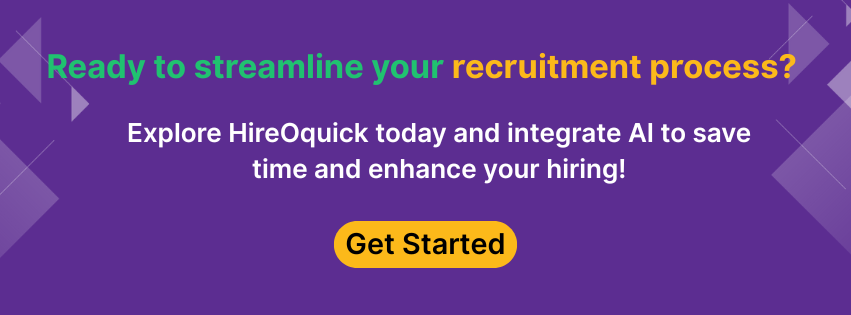
The Future is Automated: Emerging Trends in Recruitment Tech
Looking ahead, it really feels like the future of recruitment is leaning more and more towards automation. Here are just a few things that seem to be coming up.
Predictive Analytics Beyond Sourcing
Predictive analytics isn’t just going to be about finding candidates anymore. It might start to help predict things like how successful a candidate will be in the role or even how likely they are to stay with the company long-term.
Hyper-Personalization of Candidate Journeys
Things are moving towards making the candidate experience incredibly personal. AI will likely play a big part in tailoring the whole journey specifically for each individual candidate.
AI in Employee Referral Programs
You’ll probably start seeing AI integrated into employee referral programs too. It could potentially help identify which referrals are most likely to be high-quality candidates.
Frequently Asked Questions (FAQs)
People often have questions about AI and automation in recruitment, which makes sense. Here are a few common ones.
Will AI replace recruiters?
Most experts seem to agree, and I think it’s true, that AI isn’t really going to replace recruiters entirely. It’s more about giving them extra capabilities, augmenting what they can do.
How much does AI recruitment software cost?
Oh, that really varies quite a bit depending on what features you need and which vendor you go with. It’s definitely worth doing some research and comparing different options carefully.
Is AI in recruitment biased?
AI can be biased, yes, if it’s not set up or used correctly. You really need to make sure the data it’s trained on is diverse and doesn’t contain existing biases. It requires careful management.
What’s the difference between AI and automation in HR?
Okay, so AI is generally about systems that can make intelligent decisions or learn from data. Automation is more about getting computers or systems to handle repetitive tasks that used to be done manually. They often work together, but they’re slightly different things.
How long does it take to see results?
That can vary, honestly. But often, you start noticing improvements within just a few months after implementing these kinds of strategies.
Conclusion: Embrace Time-Efficient Hiring with AI & Automation
So, to wrap things up, AI and automation really offer some significant ways to save time in the recruitment process. By putting some of these strategies into practice, you can definitely make things more efficient. The idea is that AI can help free up recruiters so they have more time to focus on building relationships, evaluating candidates thoughtfully, and finding truly top talent. It really feels like embracing these technologies is the way to go for more time-efficient hiring.
Just to quickly recap, those five strategies we talked about were:
- Making Candidate Sourcing & Screening run smoother.
- Boosting Candidate Communication & Engagement.
- Handling Interview Scheduling & Coordination more easily.
- Speeding up Assessment & Shortlisting using insights.
- Automating Offer Management and some Pre-Onboarding tasks.
These kinds of approaches can lead to a better experience for candidates and, potentially, less bias in hiring. They also give you better data to work with and can make recruiters more productive. It’s really worth exploring how AI and automation could potentially transform your recruitment process.

